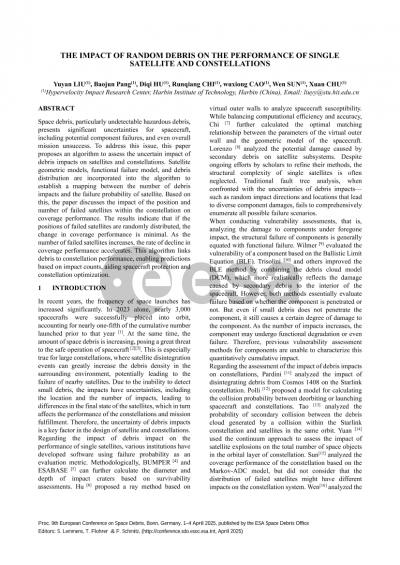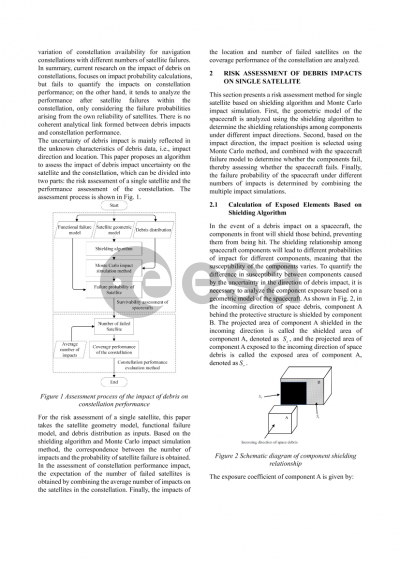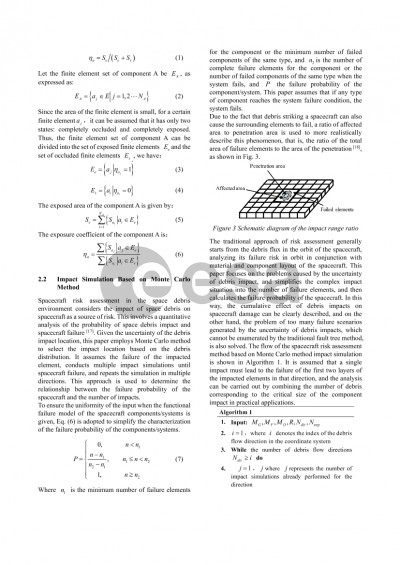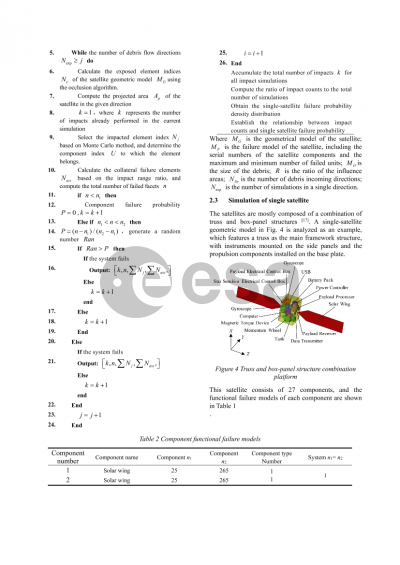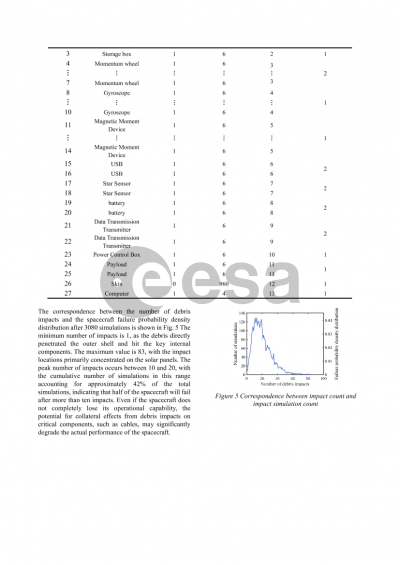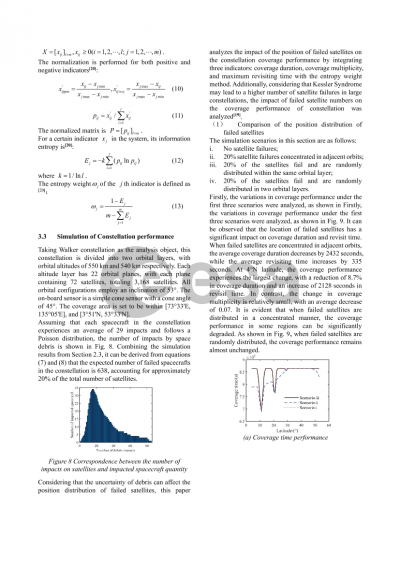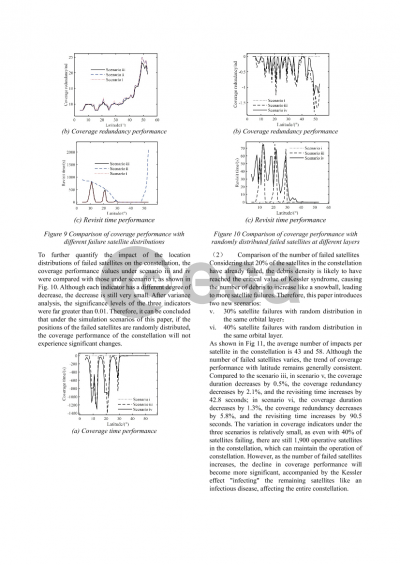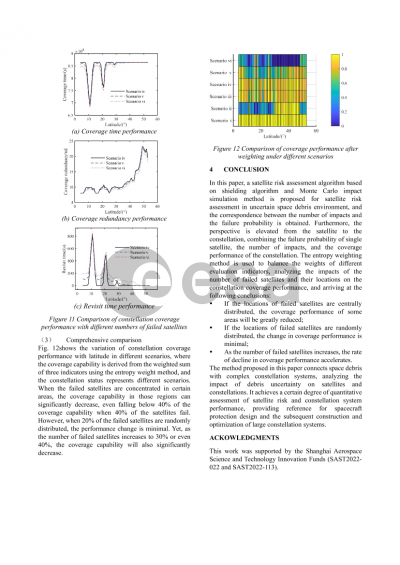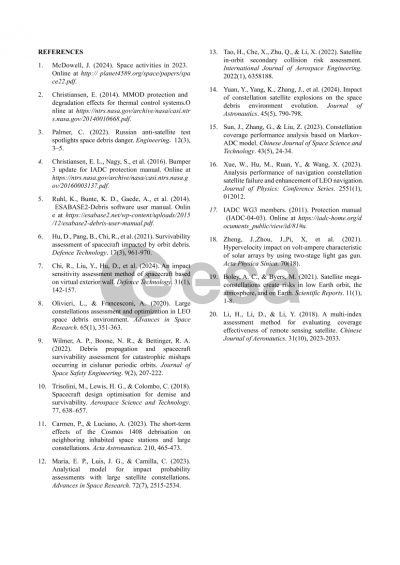Document details

Abstract
With the rapid increase in space activities, especially the significant expansion of mega-constellations, the space debris environment is under unprecedented pressure. The growing population of space debris poses a severe threat to the safety and sustainability of all orbiting spacecraft. Currently, breakup events contribute the majority of debris fragments, making them a primary driver in the ongoing evolution of the debris environment. However, these breakup events are unpredictable, resembling a Sword of Damocles to active satellites and other space assets. Given the unpredictable nature of these events, evaluating spacecraft survivability against debris impact has become a critical component for ensuring their safe and sustained operation.
To address this challenge, this paper introduces an extreme spacecraft flux algorithm as a novel approach for estimating the survival limits of spacecraft across various debris conditions. This algorithm seeks to determine the mapping relationship between different debris impact fluxes and failure probability and survivability, thereby supporting risk assessment for safer on-orbit operation.
The uncertainty in the debris environment primarily manifests in the direction of incoming debris flow and the potential impact points on the surface of the spacecraft. The proposed method begins by employing a shielding algorithm to analyze the geometric relationships between various components of the spacecraft, establishing which areas of the spacecraft are more exposed to debris from certain directions. Once these geometric configurations are determined, the model assumes a likely direction for incoming debris flow and calculates exposed surface area of each component. The Monte Carlo method is then applied to sample potential impact points across the surface of the spacecraft in a stochastic manner, allowing for random but probable impact locations to be tested within the model.
Next, the algorithm evaluates vulnerability of each component using a failure model to determine if impacts at specific locations would result in functional loss of that component or the spacecraft as a whole. This failure model assesses whether an impacted component would lead to system failure under certain impact conditions. The method then performs multiple simulation trials to determine failure probabilities under various debris flux conditions, resulting in calculated survival probabilities for the spacecraft. It should be noted that all the impacts preset in this paper can lead to the failure of surface elements, so the results of this method can provide the spacecraft failure conditions prepared in advance under different impact conditions for a complete survivability assessment. Then, the spacecraft survivability results under the selected orbit can be determined by combining with the spacecraft debris environmental data in orbit.
For this study, a detailed, multi-component spacecraft model is utilized to conduct simulation trials. The analysis of results validates the accuracy and reliability of this algorithm. Its precision is closely tied to the number of simulation trials conducted and the structural detail incorporated in the spacecraft model. The findings demonstrate that this approach offers a theoretically sound, systematic method for estimating spacecraft survivability.
This method can be instrumental for future spacecraft design, particularly in shielding, orbital strategy, and mission planning.
Preview
